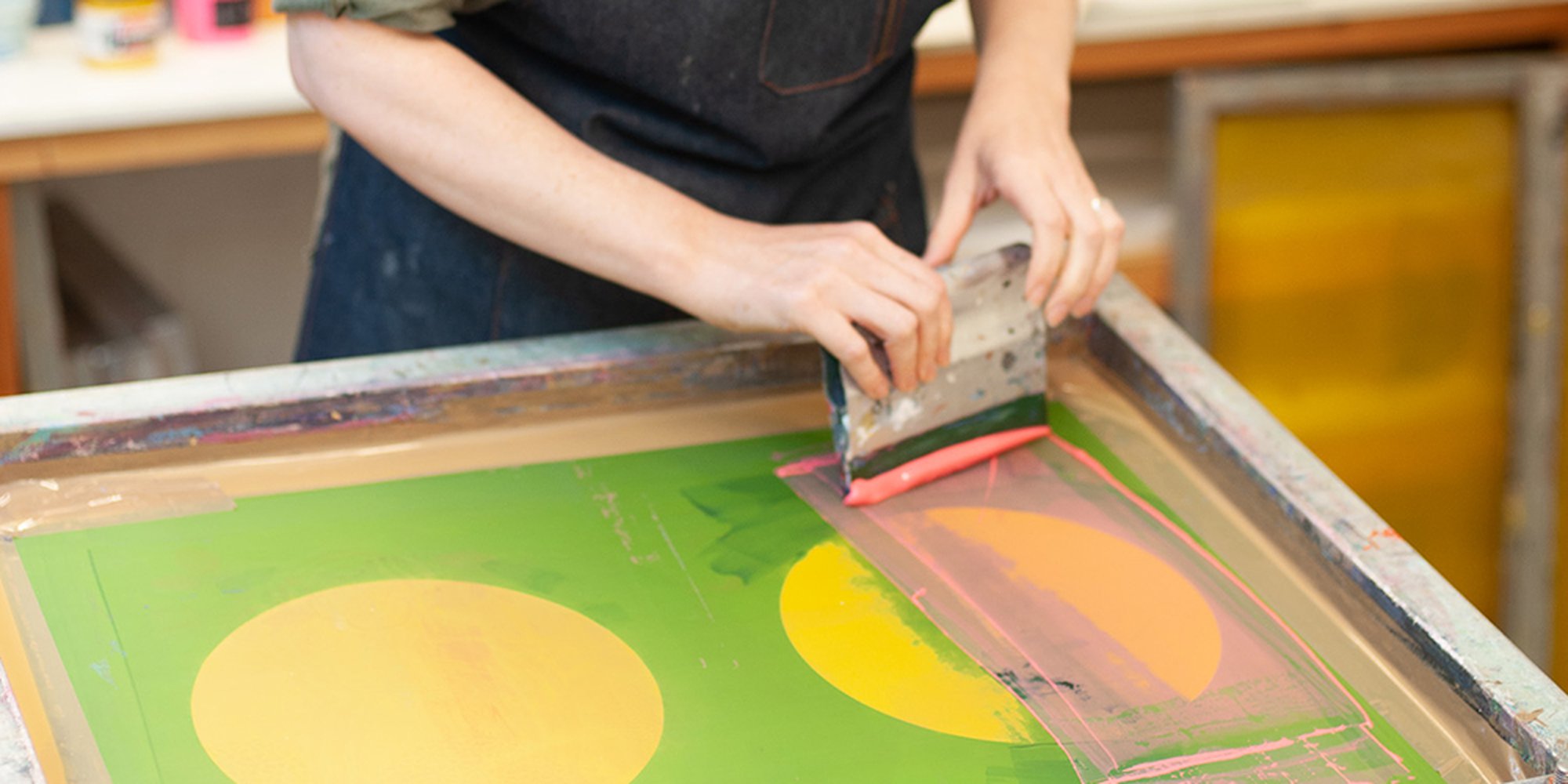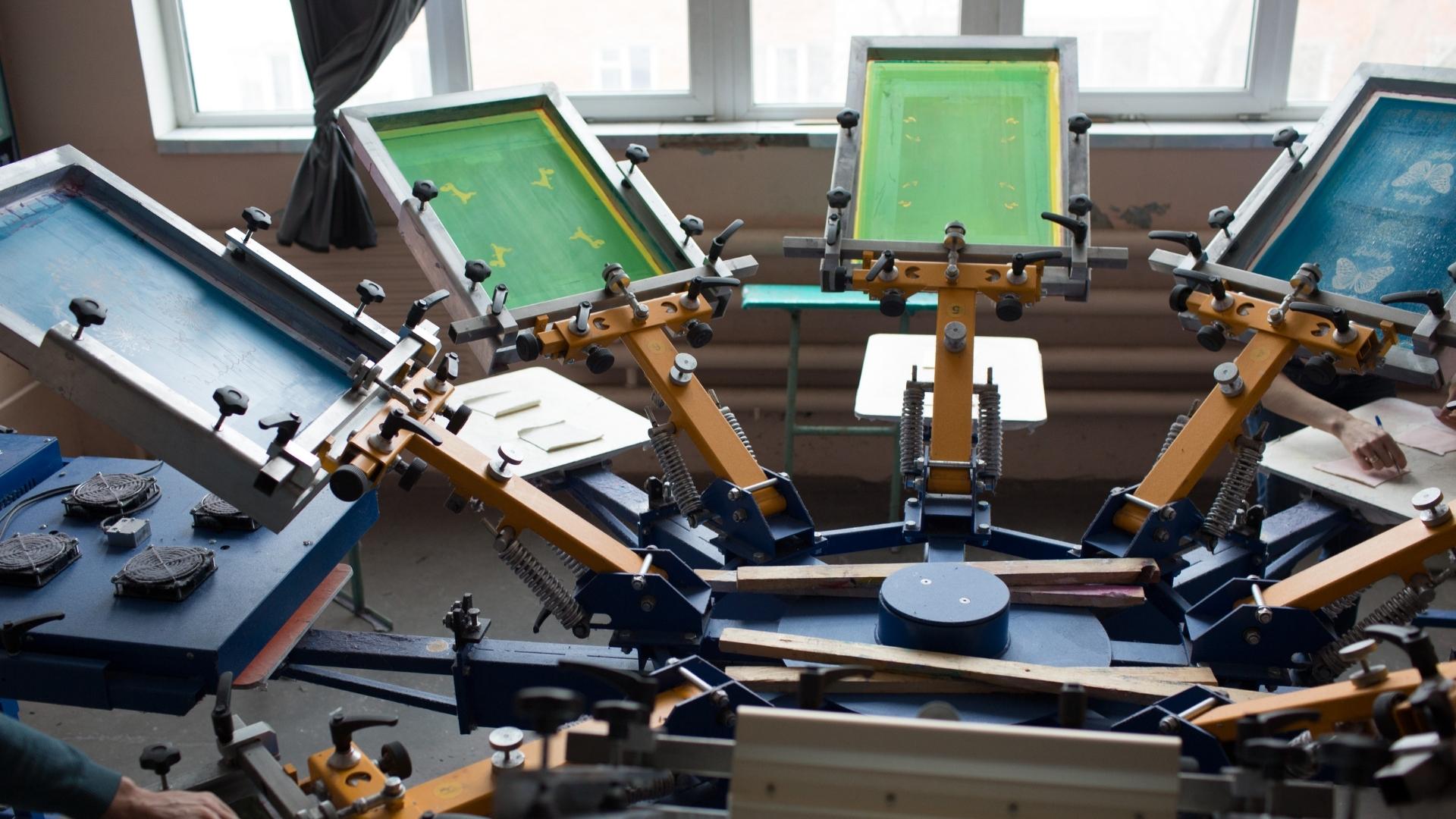The Essential Overview to Comprehending Screen Printing and Its Versatile Makes use of
Screen printing has an abundant history that dates back to old times, advancing right into an advanced method utilized throughout different industries today. This overview discovers the complexities of the screen printing process, detailing its applications in home, advertising and marketing, and style decoration - 10:9 Design Abilene. Understanding these fundamentals can open innovative capacity for both commercial and imaginative jobs. The complying with sections will certainly expose important tips and techniques to enhance one's screen printing undertakings
The History of Screen Printing
Although screen printing has roots that map back centuries, its development reflects the artistic and technical developments of various societies. Originating in old China, the method was originally utilized for enhancing textiles and later infect Japan, where it became important to Ukiyo-e woodblock printing. The method changed to Europe in the 18th century, where it acquired appeal amongst artisans and business printers. The innovation of photo emulsion in the 20th century transformed screen printing, enabling for more elaborate designs and better performance. Musicians like Andy Warhol better pushed its appeal, using the medium to develop legendary works that combined commercialism and fine art. By the late 20th century, screen printing had actually established itself as a flexible strategy, used in style, advertising, and great art. Today, it proceeds to progress, incorporating electronic modern technology and broadening its applications across different sectors.
The Screen Printing Process Explained
Screen printing transforms imaginative visions into concrete designs via a series of specific steps. A picture is developed and then transferred onto a screen, commonly made of fine mesh fabric stretched over a structure. A light-sensitive emulsion is used to the screen, which is revealed to light, solidifying in areas not covered by the picture. After cleaning out the unhardened solution, a stencil is formed.
Next, the screen is placed over the substratum, whether it be textile, paper, or another product. Ink is after that pushed with the open areas of the stencil utilizing a squeegee, depositing the layout onto the substrate below. This process can be repeated for numerous shades, needing different screens for every shade. The printed item is cured utilizing warm to assure the ink sticks correctly, resulting in a long lasting, lively layout prepared for usage.
Kinds Of Screen Printing Techniques

In addition, specialized strategies, such as discharge screen printing, get rid of color from the material to produce softer prints, while foil screen printing applies metallic aluminum foil to accomplish a glossy coating (10:9 Design Company). Each technique offers distinctive attributes, satisfying numerous imaginative demands and production scales, ultimately increasing the opportunities within the screen printing domain
Applications of Screen Printing in Various Industries

In addition, the signs and advertising markets make use of screen printing for producing distinctive display screens and banners. This approach enables strong colors and detailed styles that capture focus. In electronic devices, screen printing is utilized for applying conductive inks to circuit boards, essential for part connections. Furthermore, the home design sector accepts screen printing to produce distinctive layouts on textiles and wall surface art. In general, screen printing works as an essential tool throughout diverse areas, enhancing products with personalized and aesthetically appealing graphics.
Tips for Effective Screen Printing Projects
While carrying out a screen printing task, careful focus to detail can significantly boost the final result. Initially, choosing top quality products is essential; this consists of the screen, inks, and substrates. Utilizing appropriate get more info mesh counts can impact ink deposition and detail resolution. Prep work is just as important; extensive cleansing of displays and proper exposure times assure crisp prints.
Next off, precise enrollment is crucial for multi-color prints. Using placement devices can help accomplish exact layering. In addition, testing prints on scrap materials before production assists determine possible concerns without squandering resources.

Regularly Asked Concerns
What Materials Are Best for Screen Printing on Textile?
Cotton and polyester blends are excellent for screen printing on textile due to their durability and ink absorption. Additionally, specialty textiles like silk or canvas can generate special structures and finishes, boosting the total layout quality.
Just how Do I Tidy and Maintain Screen Printing Devices?
To clean up and preserve screen printing tools, one need to consistently clean screens with suitable solvents, inspect mops for wear, oil relocating parts, and shop all products in a dry, dust-free atmosphere to extend their life expectancy.
What Are the Environmental Impacts of Screen Printing?
Screen printing can have substantial environmental influences, consisting of chemical waste from solvents and inks, water use throughout cleansing procedures, and power consumption. Sustainable techniques and green materials are necessary for reducing these adverse impacts.
Can Screen Printing Be Done in the house Efficiently?
Screen printing can be successfully done at home with the ideal materials and strategies. Hobbyists can create quality prints, though success relies on their ability level, tools, and understanding of the procedure entailed.
What Are the Costs Linked With Starting a Display Printing Organization?

Starting a screen printing business entails prices for devices, materials, and office. Preliminary expenditures commonly vary from a few hundred to numerous thousand dollars, depending on the range, top quality of equipment, and preferred manufacturing ability.
Screen printing has an abundant history that dates back to ancient times, progressing into a sophisticated technique utilized throughout various industries today. One more strategy, rotary screen printing, employs round displays, facilitating continuous printing on textile rolls, consequently improving efficiency for large productions. Additionally, specialized strategies, such as discharge screen printing, get rid of color from the material to produce softer prints, while aluminum foil screen printing uses metallic aluminum foil to accomplish a shiny surface. In the fashion market, screen printing is widely used to produce vibrant layouts on apparel, enabling brands to display their one-of-a-kind designs. Cotton and polyester blends are suitable for screen printing on fabric due to their durability and ink absorption.